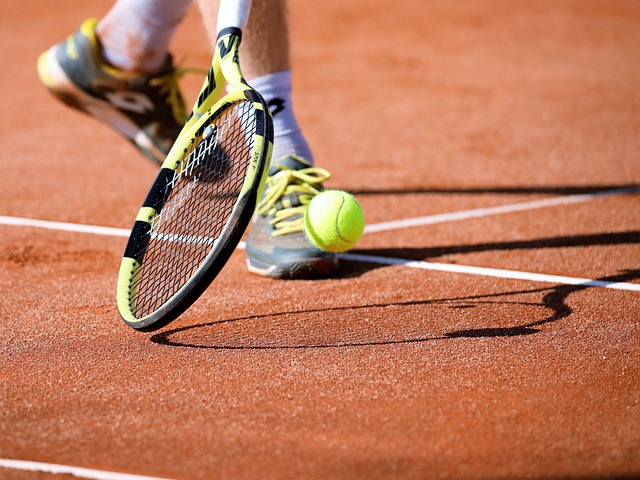Tennis has a rich and complex history, tracing its roots back to medieval France, where it was played as jeu de paume, meaning “game of the palm.” Over the centuries, tennis evolved from a simple pastime into a globally recognized professional sport.
In the 19th century, modern tennis took shape in England, with the standardization of courts, rules, and equipment. Throughout the 20th century, the sport underwent multiple innovations, including advancements in racket design, professional tournaments, and playing techniques.
The introduction of television broadcasts and media coverage played a crucial role in popularizing tennis, making it more accessible and engaging for global audiences.
Origins and Early Years of Tennis
Early versions of tennis were played in monastery courtyards and castle halls, where monks and noblemen used their hands—and later, improvised rackets—to strike a ball over a makeshift net.
By the 16th and 17th centuries, the game gained popularity among French royalty, leading to the construction of the first enclosed tennis courts. Tennis became so popular that King Henry VIII of England was known as an enthusiastic player.
Early Tennis Rules and Equipment
In the sport’s early days, rules varied from court to court. The basic goal was to hit the ball in a way that the opponent couldn’t return it.
- Balls were made of woven fabric filled with hair or cork.
- Rackets were wooden, strung with natural gut fibers.
- Scoring systems were inconsistent but gradually standardized.
A major breakthrough came in 1874, when Major Walter Clopton Wingfield patented a set of modern tennis rules, including rectangular courts and a net height similar to today’s game. This marked the beginning of modern tennis.
Tennis in the 19th and Early 20th Century – The First Major Tournaments
The oldest and most prestigious tennis tournament, Wimbledon, was first held in 1877 at the All England Lawn Tennis and Croquet Club. Other major competitions soon followed:
Together, these events formed the Grand Slam tournaments, establishing the foundation of professional tennis.
Pioneers of Early Tennis
Several legendary figures helped shape the sport:
- Spencer Gore – The first Wimbledon champion in 1877, known for his aggressive playing style and advanced forehand technique.
- Maud Watson – The first women’s Wimbledon champion in 1884, setting the standard for female players.
- Suzanne Lenglen – A dominant force in the early 20th century, winning six Wimbledon titles between 1919 and 1925.
- Bill Tilden – An American great of the 1920s, recognized for his powerful serve and precise backhand, becoming one of the first international sports superstars.
The 1950s–1990s: The Open Era & the Rise of Professional Tennis
This period was pivotal for modernizing tennis, especially with the introduction of the Open Era in 1968.
With the growth of television broadcasts, tennis gained millions of fans worldwide, leading to higher prize money, endorsements, and international expansion.
Iconic Players & Rivalries of the Open Era
This period saw some of the greatest players and rivalries in history:
- Rod Laver – The only player to win the Grand Slam twice (1962, 1969).
- Björn Borg vs. John McEnroe – Their 1980 Wimbledon final is regarded as one of the greatest matches in tennis history.
- Martina Navratilova vs. Chris Evert – A defining rivalry of women’s tennis, meeting 80 times, including 14 Grand Slam finals.
- Steffi Graf – A dominant force in the late 1980s and early 1990s, winning 22 Grand Slam titles and achieving a Golden Slam in 1988 (all four Grand Slams + Olympic gold in the same year).
Tennis in the 21st Century: Globalization & Expansion
Advancements in technology, media, and player training have transformed tennis into a truly global sport.
- Live broadcasting & digital media made tennis more accessible than ever.
- ATP & WTA Tours became highly competitive international circuits.
- Players from diverse backgrounds emerged as global stars.
Women’s Tennis – A New Era
Women’s tennis flourished in the 21st century, with stars like:
The Era of the “Big Three”
The past two decades have been defined by three legends:
Their rivalries and records have made this era one of the greatest in sports history.
Technological Innovations in Tennis
One of the biggest breakthroughs in tennis officiating and analysis was the introduction of Hawk-Eye technology.
Hawk-Eye System
Beyond officiating, modern player training has benefited from:
- Advanced analytics & biomechanics to improve technique.
- Innovative racket materials enhancing power and control.
- Customized training regimens tailored to player strengths.
The Future of Tennis
The future of tennis is shaped by young rising stars, with players from diverse regions entering the scene.
Future Tennis Stars to Watch
As new players rise, the sport is expected to become even more competitive and dynamic.
Conclusion – The Timeless Spirit of Tennis
Tennis has evolved dramatically over centuries while maintaining its unique elegance and strategic depth.
From its origins in French courts to global arenas, the sport has remained one of the most beloved worldwide.
As we look to the future, tennis continues to inspire players and fans alike, proving that its legacy is far from over.

